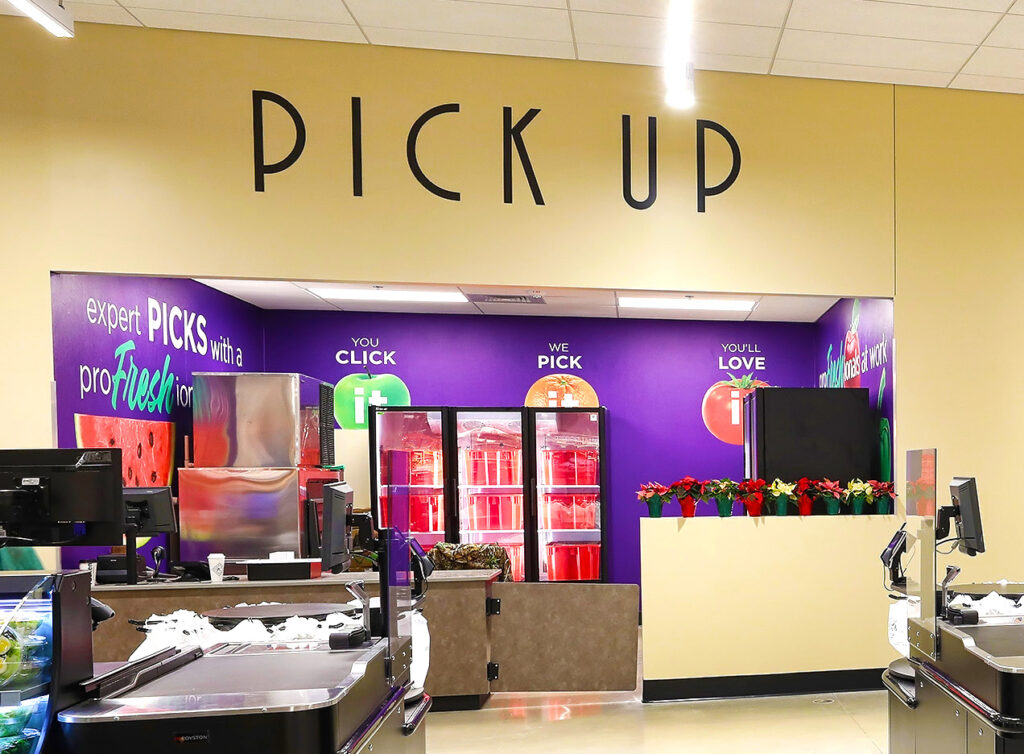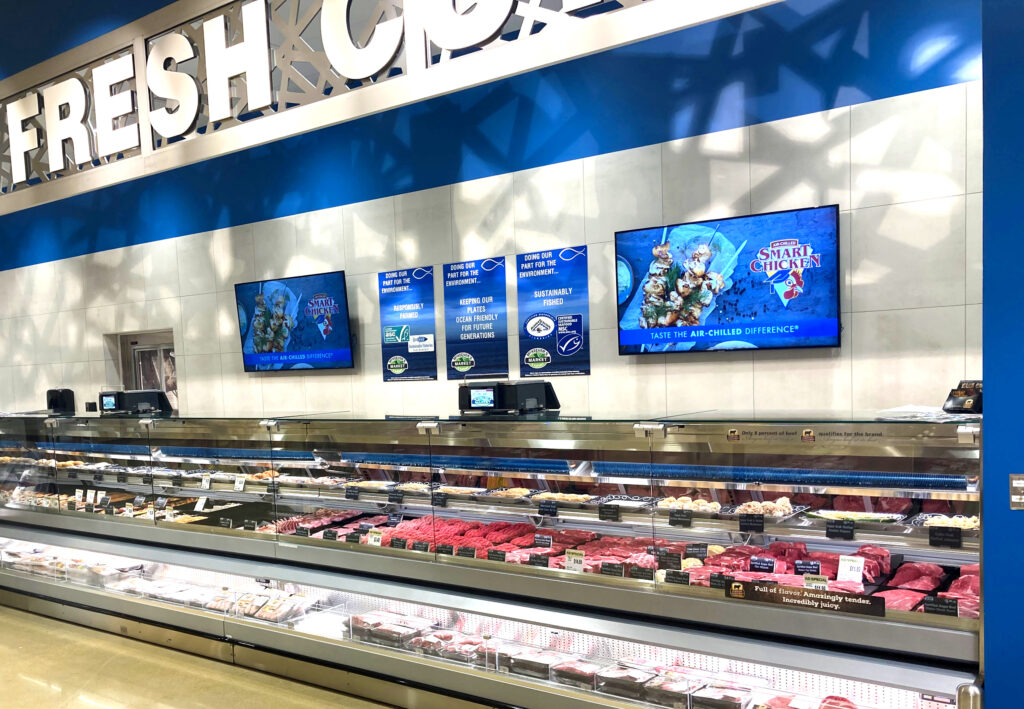In the ever-evolving landscape of technology and online experiences, grocery stores have undergone a significant transformation to meet the demands of a digital-savvy consumer base. The traditional brick-and-mortar grocery store is no longer just a place to pick up essentials; it has become an immersive and tech-infused environment. Grocery stores have adapted to accommodate the digital age, integrating technology, online shopping, and even the influence of social media, and the interior design of those stores has changed with it.
The integration of technology into grocery store design has become a hallmark of the modern shopping experience. Smart shelves, interactive displays, and mobile applications have transformed the way customers interact with products. Many grocery chains now feature digital price tags and interactive kiosks that provide detailed product information, recipes, and personalized recommendations. The store’s interior seamlessly integrates with the corresponding mobile apps, creating a consistent and user-friendly experience. The design of the physical store mirrors the digital interface, making it easier for customers to navigate both in-store and online, creating a cohesive shopping experience.



We can’t discuss technology without addressing the surge in online shopping and how it has prompted grocery stores to reimagine their layouts. Dedicated areas for order pickups, both in-store and curbside, have become commonplace. These zones are strategically placed for easy access, allowing customers to collect their pre-ordered groceries efficiently. Additionally, drive-up services have gained popularity, with some stores incorporating drive-through lanes for a quick and convenient shopping experience. The integration of technology in these pick-up areas ensures a seamless transition between the online and offline realms, catering to the needs of the modern, time-conscious consumer.
Traditional static signage is yet another area that has given way to technology, as dynamic digital displays, that provide real-time information, promotions, and announcements, have become more common. Digital signage not only enhances the aesthetics of the store but also allows for quick updates and customization. Many stores have already moved to digital menu boards for the ability to change menu items or prices easily, but now they are adding digital signage in other areas. This technology enables grocery stores to communicate relevant information to customers efficiently and in an engaging manner, in whatever department or area of the store they need.
Not surprisingly, as social media outlets continue to grow, grocery stores have become not just places to shop, they have become backdrops for influencers seeking aesthetically pleasing environments for their content. Instagram influencers and content creators are drawn to well-designed spaces, turning grocery stores into unexpected photo opportunities. Stores now pay extra attention to aesthetics, incorporating visually appealing elements that resonate with the Instagram generation. From vibrant produce displays to thoughtfully designed interiors, grocery stores have become unintentional influencers in the online space.
The evolution of grocery store interior design reflects the dynamic interplay between technology, online experiences, and the influence of social media. The modern grocery store is no longer merely a functional space; it is a blend of the physical and digital realms, providing a seamless and engaging shopping experience. As consumers become more conscious of their surroundings, grocery stores continue to adapt, ensuring that every visit is a journey into a whole new world of design and innovation.










